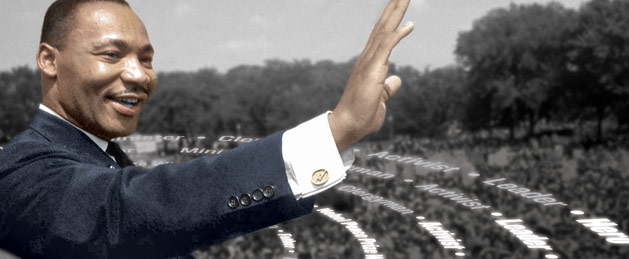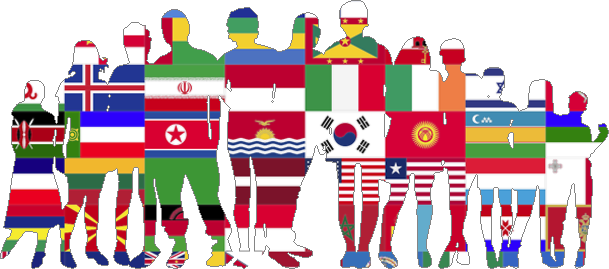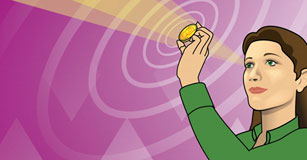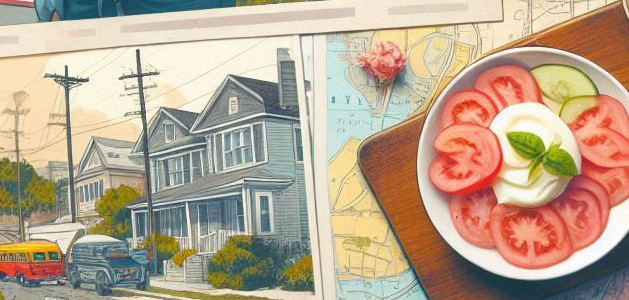Not Your Average Portfolio
Students will learn about the life of a famous person and create non-fiction porfolio about the individual.
App: Wixie™

Task
With the economy down, things are tough for everyone. As the agent for a famous person you are studying, it is your job to develop a portfolio for him or her that will help them showcase specific skills and accomplishments to potential employers.
Engage
This project sets the stage for high-interest reading with a purpose and presents a twist on the traditional biography project. Student teams research a famous person and create a digital portfolio showcasing this individual’s skills and achievements.
Begin by asking students to define what makes a biography. What sort of things would they expect to find in a biography about a person’s life?
Work as a class to brainstorm famous people on the topic you have chosen. Then add any additional names you want students to consider.
Share a biography of Martin Luther King, Jr. and ask students to work in pairs to generate questions about his life. Then ask for their ideas on how this information might be organized or categorized. Pass out a web graphic organizer and discuss how categories and subcategories can be used to summarize a person’s life achievements.
Create a Graphic Organizer
Need a thought web, timeline, flowchart, or other graphic organizer for a lesson?
CreateWork as a class to choose the categories they will include in their biographical portfolios. They may come up with categories such as:
- General Information
- Major Contributions
- Challenges and Obstacles
- Unique Aspects
- Geographic Region
Procedure
Ask teams of three students to research a famous person, or have students choose a person to study and find two other students willing to team with them to develop a portfolio. Have students question each other as to what they already know about this person, as well as things they do not know but want to learn.
Create
Ask students to begin basic researching and skimming biographies to answer the questions they generated about their selected person. Then have students add this information to the categories on the web graphic organizer.
Now that information is beginning to be organized, have students work to research more complete information for each category and begin writing. Teams should review their research and edit written text to ensure that the information will be easily understood by the viewer.
Design affects our ability to communicate information and share our ideas effectively. Once the research and writing are complete, teams should consider how to design the portfolio to represent and reflect their individual. Give teams a storyboard to design the layout for their individual’s portfolio.
When the web organizer, storyboard, and written descriptions are complete, students are ready to start creating the portfolio in Wixie. If time is limited, you may want to encourage students to open and work from an existing portfolio template.
Share
Give student teams an opportunity to present their portfolios to the entire class or small groups of students and make a pitch about why this individual would make a great potential employee.
You may want to ask a representative or two from local businesses’ HR departments to review the portfolios online for feedback on the qualities as if they were looking to hire individuals for a position. You could also invite these people to your class to view presentations and provide feedback!
Assessment
Initial assessment should begin by having students turn in their web graphic organizers for a quick review before receiving a storyboard. This will give you insight as to whether the students are on the right track to completing their person’s portfolio. A mini-conference may be needed for students who are struggling with the structure of information.
Have students write a reflection on what they have learned about the value of using a web graphic organizer to help them recall and organize information. Once the reflective journals have been written, the oral presentation can be assessed in two ways: a rubric and a peer evaluation write-up based on the quality and completeness of information given.
Resources
Gifford, Clive. 1000 Years of Famous People
McLeod Humphrey, Sandra. Dare To Dream!: 25 Extraordinary Lives
Bio True Story - biography.com
Biographical Dictionary - s9.com
Standards
Common Core Anchor Standards for English Language Arts - Grade K-12
Reading Standards
Key Ideas and Details
1. Read closely to determine what the text says explicitly and to make logical inferences from it; cite specific textual evidence when writing or speaking to support conclusions drawn from the text.
2. Determine central ideas or themes of a text and analyze their development; summarize the key supportingdetails and ideas.
3. Analyze how and why individuals, events, and ideas develop and interact over the course of a text.
Craft and Structure
4. Interpret words and phrases as they are used in a text, including determining technical, connotative, and figurative meanings, and analyze how specific word choices shape meaning or tone.
6. Assess how point of view or purpose shapes the content and style of a text.
Integration of Knowledge and Ideas
7. Integrate and evaluate content presented in diverse media and formats, including visually and quantitatively, as well as in words.
8. Delineate and evaluate the argument and specific claims in a text, including the validity of the reasoning as well as the relevance and sufficiency of the evidence.
Range of Reading and Level of Text Complexity
10. Read and comprehend complex literary and informational texts independently and proficiently.
Writing Standards
Text Types and Purposes
2. Write informative/explanatory texts to examine and convey complex ideas and information clearly and accurately through the effective selection, organization, and analysis of content.
Production and Distribution of Writing
4. Produce clear and coherent writing in which the development, organization, and style are appropriate to task, purpose, and audience.
Research to Build and Present Knowledge
7. Conduct short as well as more sustained research projects based on focused questions, demonstrating understanding of the subject under investigation
Language Standards
Conventions of Standard English
1. Demonstrate command of the conventions of standard English grammar and usage when writing or speaking.
2. Demonstrate command of the conventions of standard English capitalization, punctuation, and spelling when writing.
Vocabulary Acquisition and use
6. Acquire and use accurately a range of general academic and domain-specific words and phrases sufficient for reading, writing, speaking, and listening at the college and career readiness level; demonstrate independence in gathering vocabulary knowledge when encountering an unknown term important to comprehension or expression.
ISTE NETS for Students 2016:
3. Knowledge Constructor
Students critically curate a variety of resources using digital tools to construct knowledge, produce creative artifacts and make meaningful learning experiences for themselves and others. Students:
a. plan and employ effective research strategies to locate information and other resources for their intellectual or creative pursuits.
b. evaluate the accuracy, perspective, credibility and relevance of information, media, data or other resources.
c. curate information from digital resources using a variety of tools and methods to create collections of artifacts that demonstrate meaningful connections or conclusions.
6. Creative Communicator
Students communicate clearly and express themselves creatively for a variety of purposes using the platforms, tools, styles, formats and digital media appropriate to their goals. Students:
a. choose the appropriate platforms and tools for meeting the desired objectives of their creation or communication.
b. create original works or responsibly repurpose or remix digital resources into new creations.
c. communicate complex ideas clearly and effectively by creating or using a variety of digital objects such as visualizations, models or simulations.
d. publish or present content that customizes the message and medium for their intended audiences.













